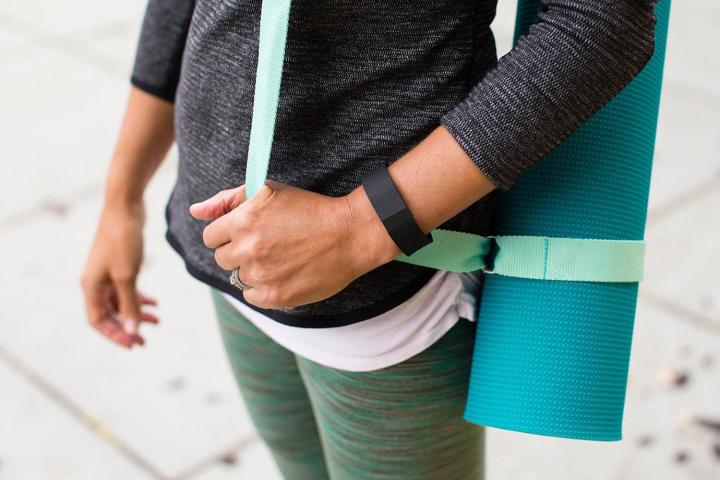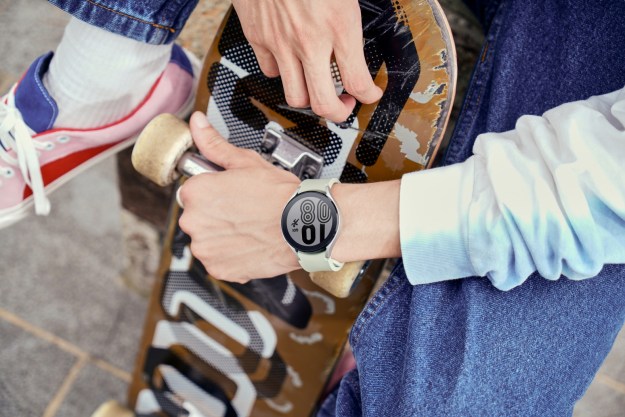
Here’s the crazy thing, though: All of that brightly colored branding isn’t far from the truth. The Fitbit hasn’t turned a group of schlubby couch dwellers into finely tuned Greek Gods overnight. In fact, if studies are any indication, fitness wearables are most likely to wind up on the wrists of people who need them the least.
A lot of the numbers I’m drawing on in this column come from Wearable Devices as Facilitators, Not Drivers, of Health Behavior Change, a study by The Journal of the American Medical Association that sheds some interesting light on many of the questions we’ve had around the popularity and efficacy of fitness wearables. It’s worth a read if you have even the remotest interest in wearable technology.
As the piece puts it, “wearable devices seem to appeal to groups that might need them least.” That’s really the worst kept secret in wearables — while espousing all their potential health benefits, it’s easy to overlook the fact that, in many cases, they appeal the most to people who are already healthy. This issue is due partially to the fact that people who buy such devices tend to be younger, early adopters who aren’t experiencing the ill health effects of not exercising.
Unsurprisingly, due to their $100+ price points, wearables also tend to appeal to those who have more money. Study after study will tell you that there’s a very real link between poverty and obesity, which means that, in these relatively early days of the wearable craze, these devices are far less likely to get onto the wrists of people who need them.
In fact, here’s a number to put things into perspective for those of us who live in the wearable bubble: While the industry is projected to be around $50 billion by the year 2018, only 1-2 percent of people in the United States actually own a wearable. For the vast majority of folks, wearables don’t yet exist outside news reports and those annoyingly positive ads.
Fitness wearables are just more likely to wind up on the wrists of people who, in a sense, need them the least.
Continually dropping prices will solve part of this problem. It’s not too hard to imagine a day in the near future where you can walk down to Walgreens and pick up a $5 wearable device. We’re also already seeing health tracking technology integrated into our existing smart devices. Most Americans may not shell out $150 for a bracelet that exists for the sole purpose of counting steps, but as we near smartphone ubiquity in this country, it’s much easier to envision people doing some sort of app-based tracking through the technology they already own.
Still, even if we fast-forward to a time when most Americans either own a standalone wearable or have a smart device capable of some manner of health tracking, we may still be on the road to nowhere. As the temporary pull-up bar that I bought and hung over my kitchen door can attest, we have plenty of technology that can help get us in better shape — but we don’t really posses the means for forcing us to use the stuff. Hell, that’s what keeps all of those shouty personal trainers at your gym in business. If our fitness technology possessed the ability to motivate us, they’d be walking their finely tuned bodies down to the unemployment line.
Like the row after row of pristine treadmills at the gym you belong to but never actually visit, no fitness wearable is smart enough to actually work out for you. Regiments are difficult to maintain. In fact, our gyms couldn’t even operate if we all worked out regularly.
Companies like Basis are trying to offer a sort of built-in electronic personal trainer, giving users slightly annoying, but often necessary reminders to get up and go for a walk or a run or even just stand up and stretch every half hour or so.
The American Medical Association suggests tying such devices more closely into our healthcare, which is something we’re seeing more and more. I used to work for a big corporation that offered a free pedometer, which actually reduced healthcare costs if its wearer took a certain number of steps in a day. At least that’s a solution that speaks to the ever-important influence of money in our daily lives.
The other solution is that technology just keeps trying new ways to get us to move more — an increasingly difficult goal in an era of ever-shrinking attention spans.
Until Fitbit designs a device that will swing the kettlebell itself, the heavy lifting is still on us. For now, fitness wearables are making the fit even fitter, and doing little for the rest of us.



